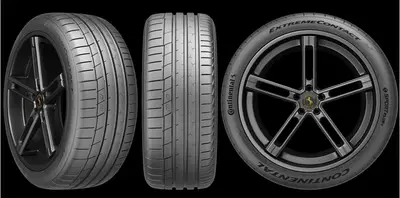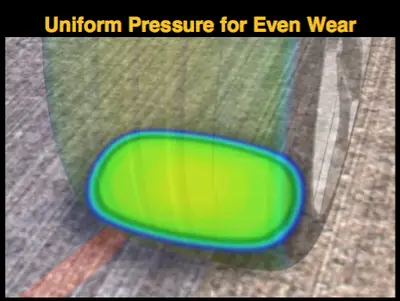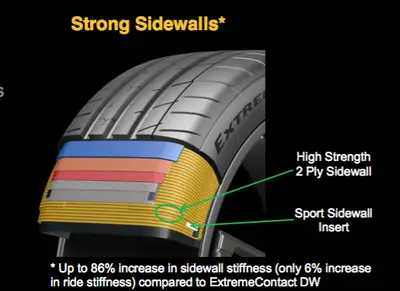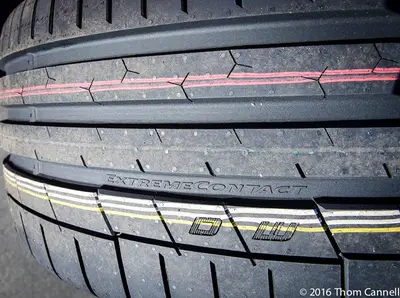Continental ExtremeContact Sport - A Modest Primer On Building UltraHigh Performance Tires
By Thom Cannell
Senior Editor
Michigan Bureau
The Auto Channel
According to Continental (and other global manufacturers), tire creation science boils down to compound and construction. Compounding is a delicate science, one that relies on premiere suppliers to deliver the raw goods, for instance the carbon black, oils and rubbers that make up a tire’s uncured mixture.
According to Continental engineers, materials science has vastly improved in the last decade. Material consistency is better, as is the ability to measure precisely what’s going into the mixture. “It’s not just what goes in, but the mixing technology itself, what goes in, how much of it and at what point,” they told us.
This makes it impossible for rip-off $30 tire makers to do more than copy the exterior appearance. “You can’t just cut out a sample of our tire and put it under a microscope, then copy and expect a similar result”. The same goes for analysis by mass spectrometers.” Don’t tell that to Abby Sciuto or Major Mass Spec.
How tires are constructed is another art that undergoes testing and evaluation. For the Sport there’s evaluation of suppliers for different parts of the tires. For instance the supplier of steel cord used in this tire is based in the Czech Republic and their technology results in consistent physical properties such as elongation and parting strength. “Not just anyone can make good steel wire”, we were told.
Rubber samples are created and dragged across various surfaces to understand both where each sample gives up peak grip and how much grip each sample maintains after ultimate adhesion is lost. How readily each compound breaks away and how much grip it maintains thereafter is a very critical, and a potentially comforting bit of knowledge.
After tread design is decided, molds have to be designed and built and this takes place in computer modeling followed by making test tires for machine and vehicle testing. Some tests, like friction or tread grip, NVH (Noise, Vibration, and Harshness) are objectively tested. Others like comfort and predictability are more subjective and fun to test on fast cars, as we did.
For the ExtremeContact Sport there were changes to the sidewall design, the bead and its seating surface design, and the apex (where and how the sidewall wraps around the bead seat). That’s not to mention compounds, cap plys, tread design and appearance of the sidewall.
The part you see is precisely designed for looks, traction, and water evacuation. Conti “sipes” (specific cuts in the tread blocks) the tire for both grip and water evacuation. Central grooves \ pump water front-to-back, expelling water under the tread. This tire has Continental’s signature chamfered sidewalls which are very plain, it’s what their buyers want.
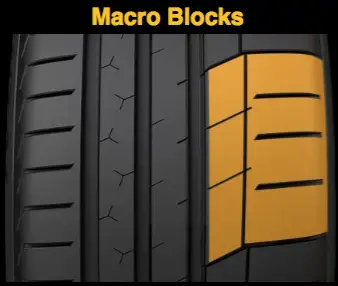 |
The tire has stronger sidewalls than the Continental Extreme DW it replaces. A new tread design and construction puts even pressure across the footprint. For safety there are molded-in performance indicators, the D and W. Once the W disappears you might consider replacing the tire if you live in frequently rainy territory. When the D goes away, find new tires.
The result is a tire that produces up to two seconds faster lap time, improved tread life (up to +20%), wet and dry traction that close in on a 10% improvement, and beat competitors—which you’ll find in the story.
ExtremeContact Sport comes with consumer budget goodness. As part of the Total Confidence Plan you have 12 months or first 2/32” road hazard assistance and three year flat tire assistance, a 60 day or 2/32” return policy satisfaction trial. Also, a 30,000 mile limited mileage warranty.
At its recent launch, 71 sizes from 15” to 20” with W and Y speed ratings were available. Do add this impressive tire to your short list.



